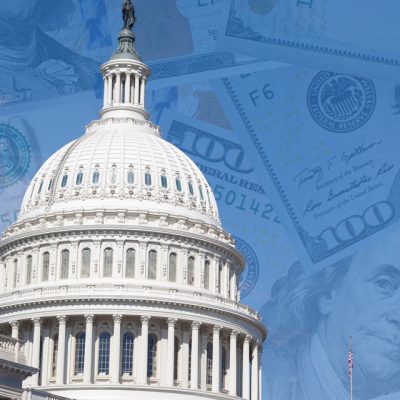Falcon
NOT FOR REPRINT
CFAs Make 11 Predictions on Long-Term Effects of Pandemic Stimulus
Slideshow November 12, 2021 at 04:29 PM
Share & Print
CFA Institute notes in the introduction to a new paper that governments and central banks in advanced economies have implemented robust and comprehensive plans and have taken a coordinated approach to fiscal and monetary stimulus — a novel and potentially controversial stance on central bank independence. The influx of liquidity into the system tamed the risks of pandemic-related market dislocation for sure, and at least partially helped bridge the gap for market participants, workers, regulators, policymakers and investors directly affected by the economic shutdown measures. Now, concerns are growing about the eventual unintended consequences of this liquidity infusion, including questions about a multispeed recovery, inflationary pressures, addiction to monetary stimulus, taxes, emerging regulatory risks and the actual financial health of corporates. The survey results appear to confirm the risk that stimulus measures may be having unintended socioeconomic consequences, Olivier Fines, CFA head of advocacy and policy research EMEA, said in a statement. "These consequences need to be considered by monetary authorities along the way toward a full recovery and as we design policies for future crises," Fines said. "The question of accountability and the targeted impact of measures should be addressed." CFA Institute fielded a survey in March of its global membership to assess their sentiments about the consequences of monetary policy and financial support in response to the pandemic crisis. A total of 150,024 individuals received an invitation to participate in the survey. Of those, 6,040 provided a valid answer, for a total response rate of 4%. See the gallery for 10 key findings from the survey.
NOT FOR REPRINT
© Touchpoint Markets, All Rights Reserved. Request academic re-use from www.copyright.com. All other uses, submit a request to [email protected]. For more inforrmation visit Asset & Logo Licensing.
Featured Resources
View All
Sponsored by Axos Advisor Services
Integrated Banking Solutions: How To Enhance Client Services and Grow Your Business

Sponsored by Optifino
Three Macro Trends Impacting Long-Term Care: Trends, Solutions & Client Conversations

Sponsored by Vanilla
The Missing Piece: Why Advisors Who Skip Estate Planning are Failing Their Clients







